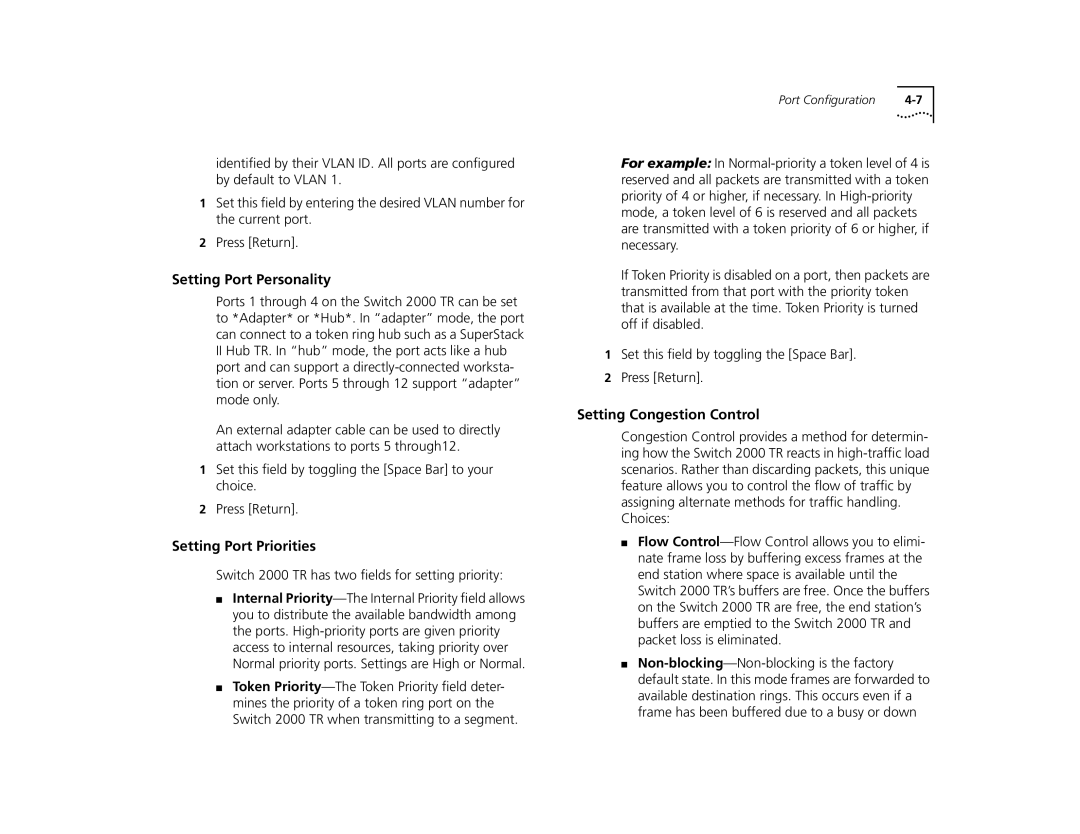identified by their VLAN ID. All ports are configured by default to VLAN 1.
1Set this field by entering the desired VLAN number for the current port.
2Press [Return].
Setting Port Personality
Ports 1 through 4 on the Switch 2000 TR can be set to *Adapter* or *Hub*. In “adapter” mode, the port can connect to a token ring hub such as a SuperStack
IIHub TR. In “hub” mode, the port acts like a hub port and can support a
An external adapter cable can be used to directly attach workstations to ports 5 through12.
1Set this field by toggling the [Space Bar] to your choice.
2Press [Return].
Setting Port Priorities
Switch 2000 TR has two fields for setting priority:
■Internal
■Token
Port Configuration |
For example: In
If Token Priority is disabled on a port, then packets are transmitted from that port with the priority token that is available at the time. Token Priority is turned off if disabled.
1Set this field by toggling the [Space Bar].
2Press [Return].
Setting Congestion Control
Congestion Control provides a method for determin- ing how the Switch 2000 TR reacts in
■Flow
■
